
How do we find just and joyful ways of existing amid ongoing climate collapse, madness, genocide? How can we hold the incomprehensible in our everyday and what are its unspoken languages?
We begin by slipping off the edge of known vocabularies and governable landscapes— a strategic and necessary escape. We get lost in tongueless frenzies and revel in unruly forests. Commune with water-spirits and mourn the forcibly drowned. Dwell with floral spectres and entangle with protesting bodies.
Scape: A stalk directly emerging from the root; also landscape, escape, scapegoat, dreamscape and so on. —scape brings together South Asian artists, each of whose works are rooted in their located contexts even as they invite us into their expansive somatic, political, and emotional ecologies.
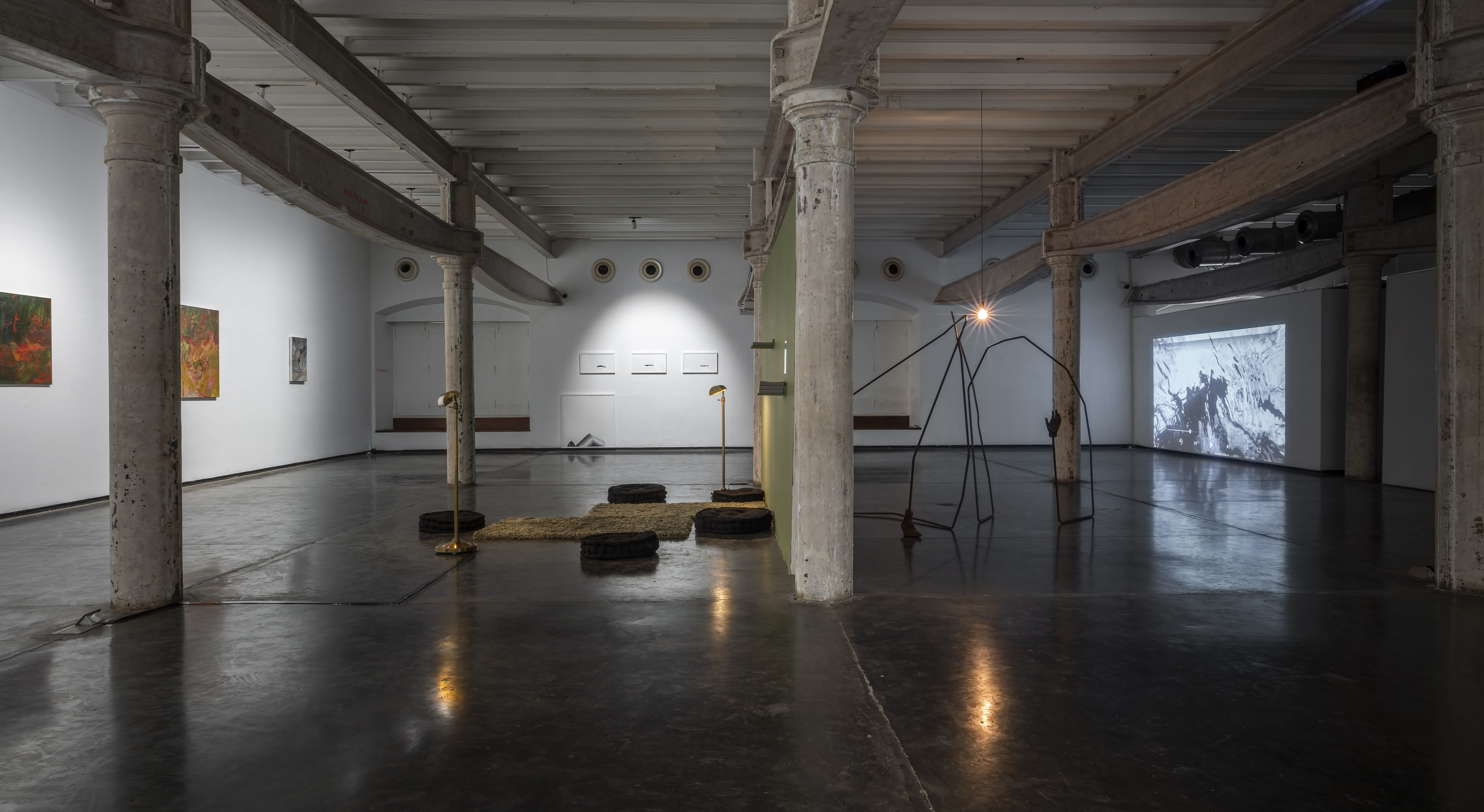
—scape, Installation View, 2025
— commingling, falling, learning —
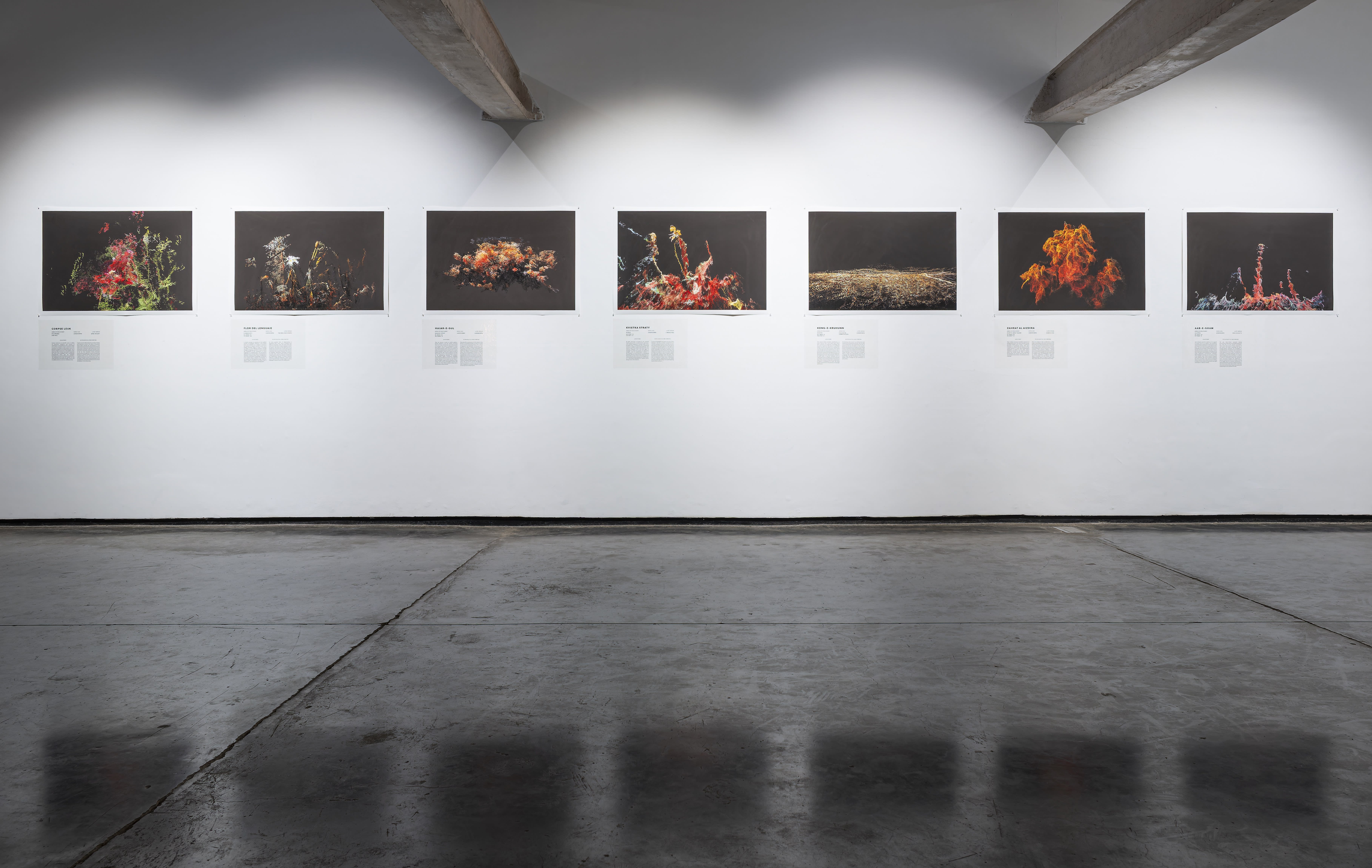
Moonis Ahmad, Gul-e-Curfew, Installation View, 2025
In his work Gul-e-Curfew (Here, Flowers Are Specters That Will Haunt You In Spring), Moonis Ahmad assembles a collection of ‘militant’ ecological beings which take root in colonised territories and spatio-temporal ruptures — the Gaza Strip, Kashmiri villages, the West Bank, Syria, prisons, asylums. As active agents, they affect all beings around them, causing confusion, madness, muteness, nostalgia, remembrance, loss of language.
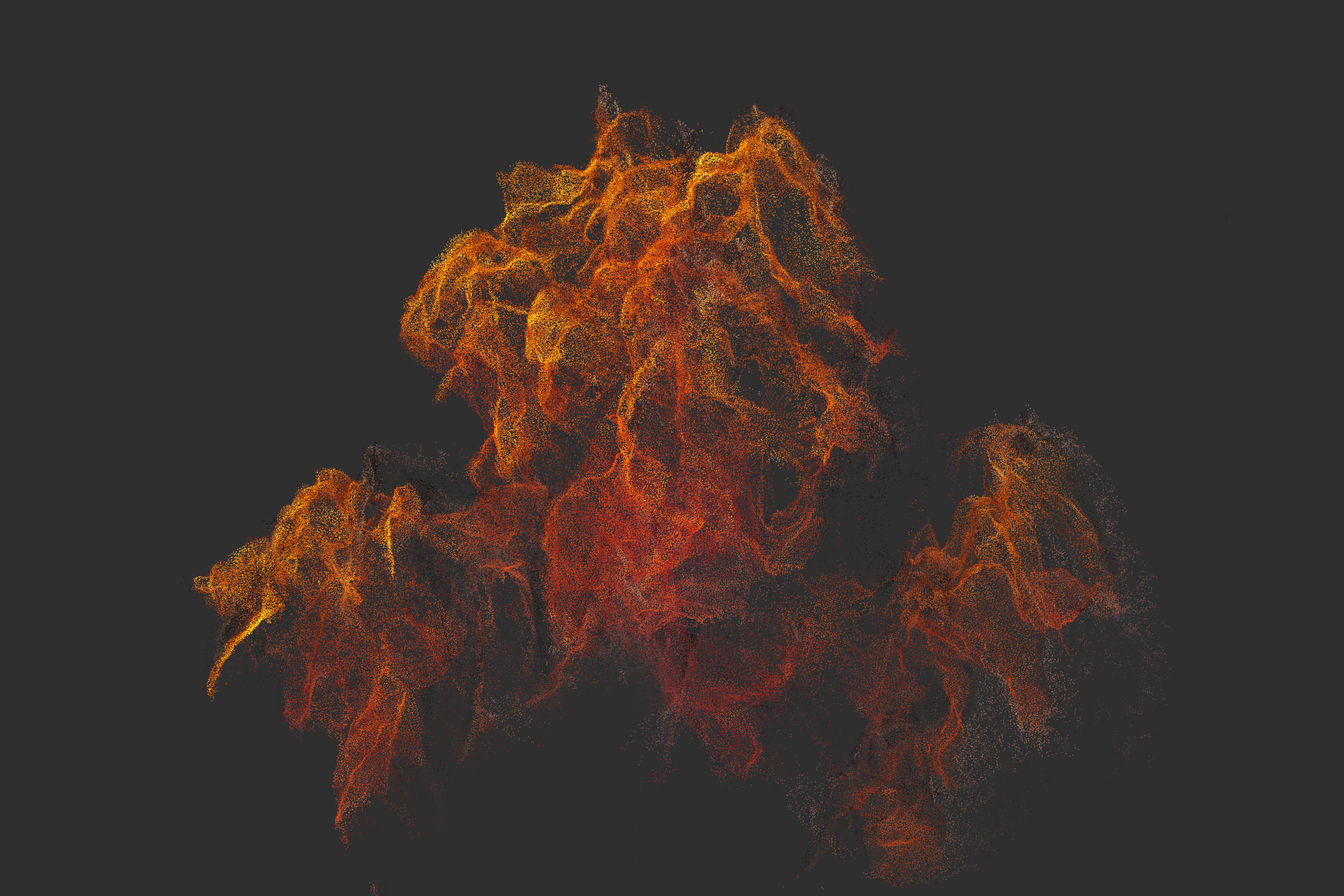
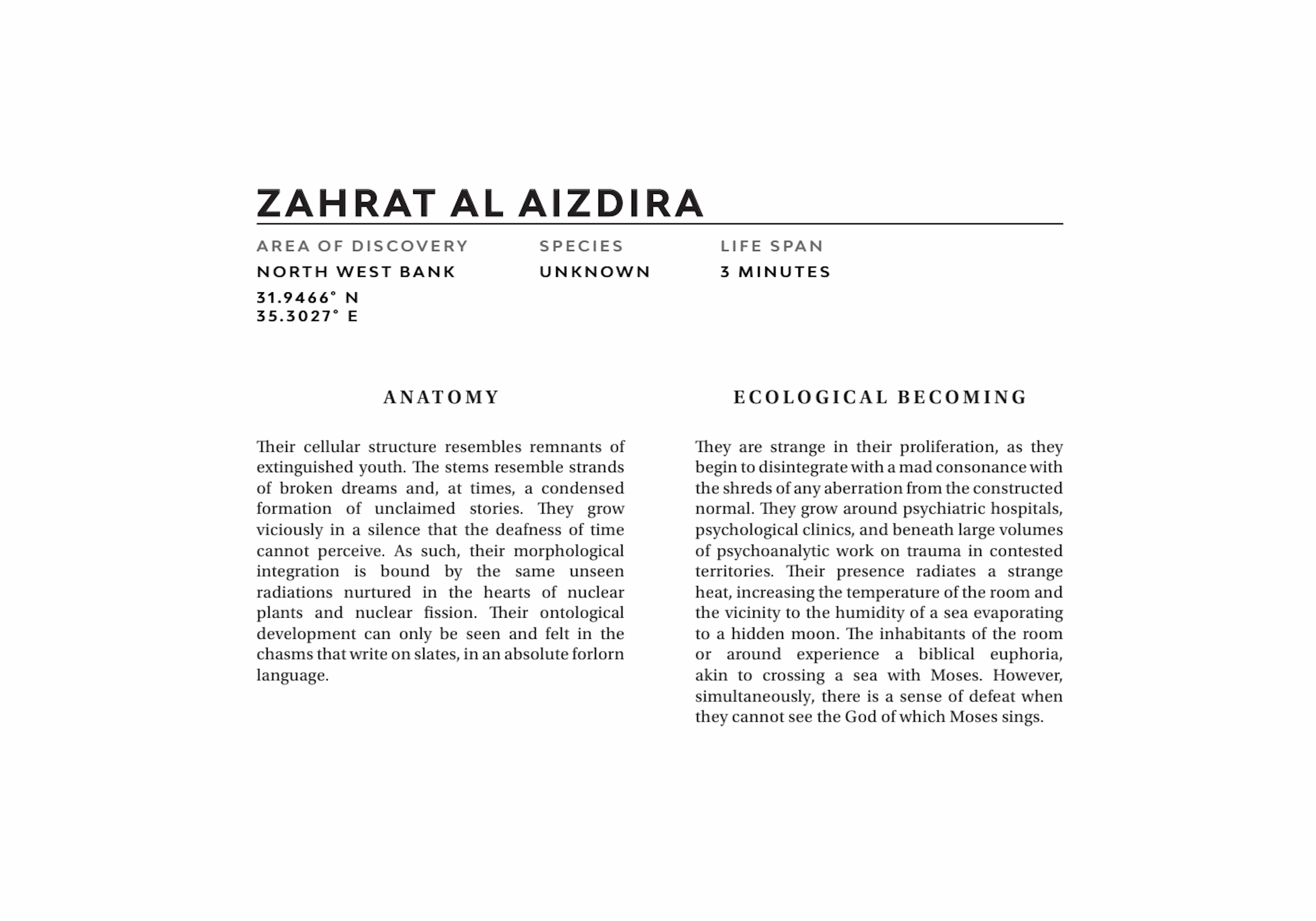
Moonis Ahmad, Zahrat al aizdira, Print on Hahnemühle Photo Matt paper, 24 x 36 inches, 2024
Each image is a composite of hundreds of photographs taken by Ahmad who also writes the displayed texts recording their respective anatomies and becomings. Together, these prints form an alternate taxonomy of flora networks which haunt space and minds, refusing anthropocentric or nation-state classifications. For Ahmad, “colonial processes, both past and ongoing, specifically frame colonised ecologies, portraying them as passive and arranging them into semiotic grids to foster national or imperial identities.” And so these spectral beings recall lived and lost ancestors (both human and otherwise) who continue to gather, commune, defy, and exist within the biopolitical realities and infinite kinds of curfews of living under occupation.
— to expand, to unravel —
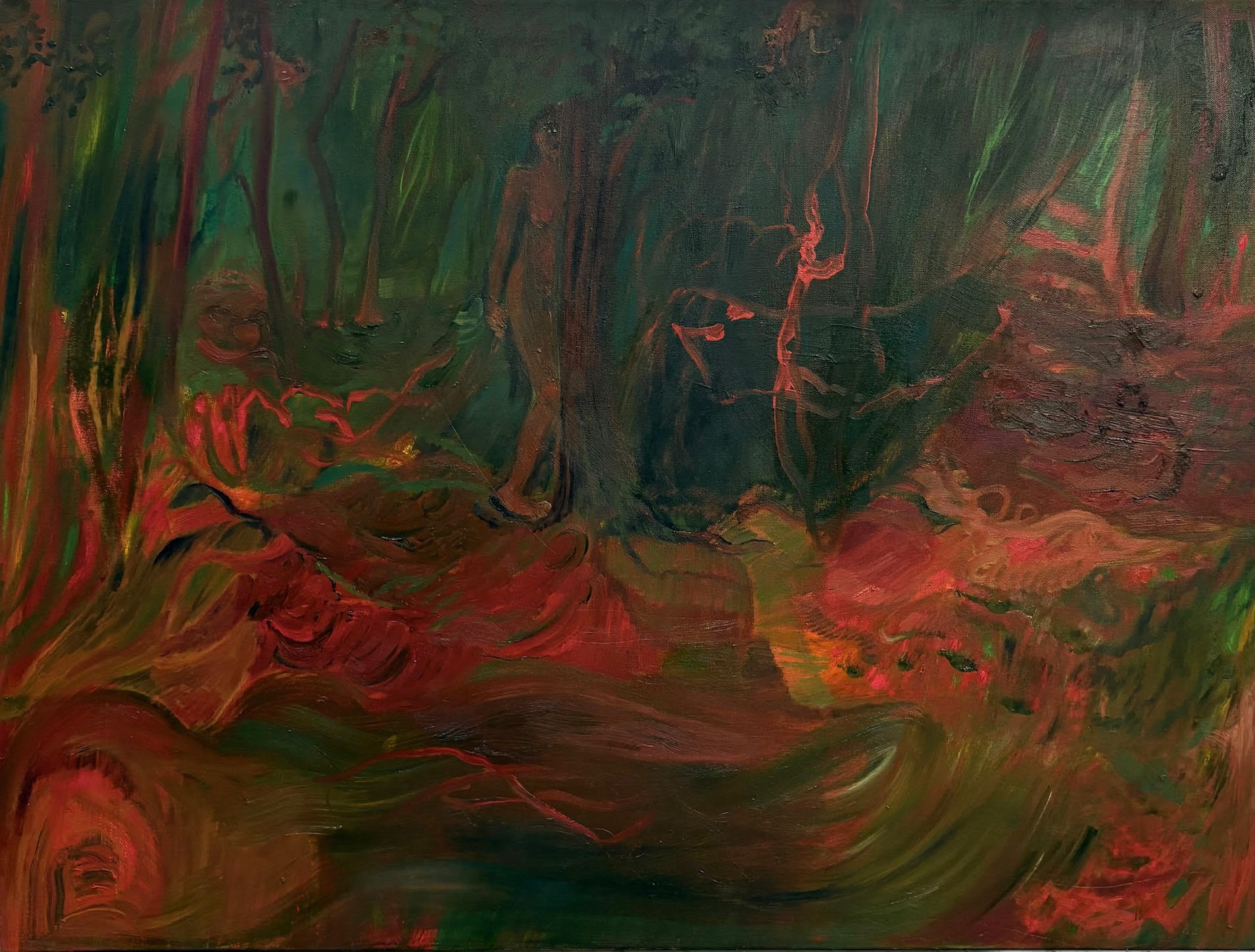
Nature and Netrabile are inextricable in her work; under-foot, finger-grazed, sensuously-attuned. She walks through her now-local forests in Chicago and once-childhood ecologies of Malnadu. Her work moves through disaster and decay, regeneration and bloom, in equal measures. Always restless, always investigative, always abundant. How does non-human nature become more than passive landscapes in art and life, how can we perceive its bewildering plurality beyond our often reductive ways of seeing? In Netrabile’s work, we find a potential answer: an unsettling. Looking, in her worlds, can itself become an act of exhuming. Temporality shifts, unsettling the logics of visual and temporal language. Flux is the very vector compelling and expanding the interrelations between nature and painter, painter and painting, painting and viewer, viewer and nature. All of these interrelations refuse to be named or distinguished and instead, insist on being deeply felt.
— hold, be held —
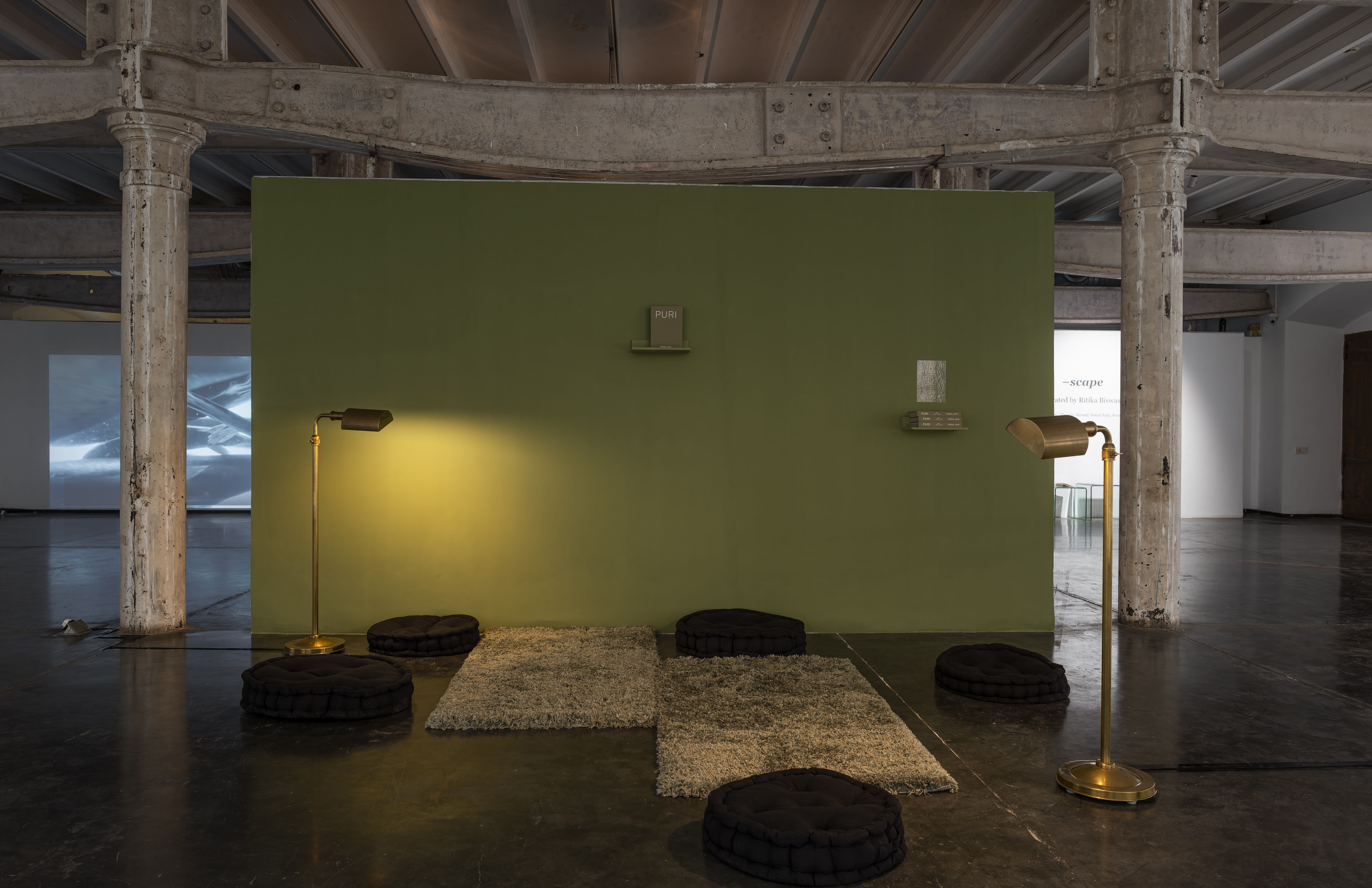
Sonal Jain, PURI, Installation View, 2025
PURI, named for local water spirits, has its roots in the forests and waterbodies of the Khasi hills in present-day Meghalaya, Sonal Jain’s home. Filled with stories of humans being possessed, in her work we enter not only more-than-human worlds, but also complex histories governing the region, from British-era colonial water governance, to indigenous dictionaries of ecological codes, and gendered mythologies.
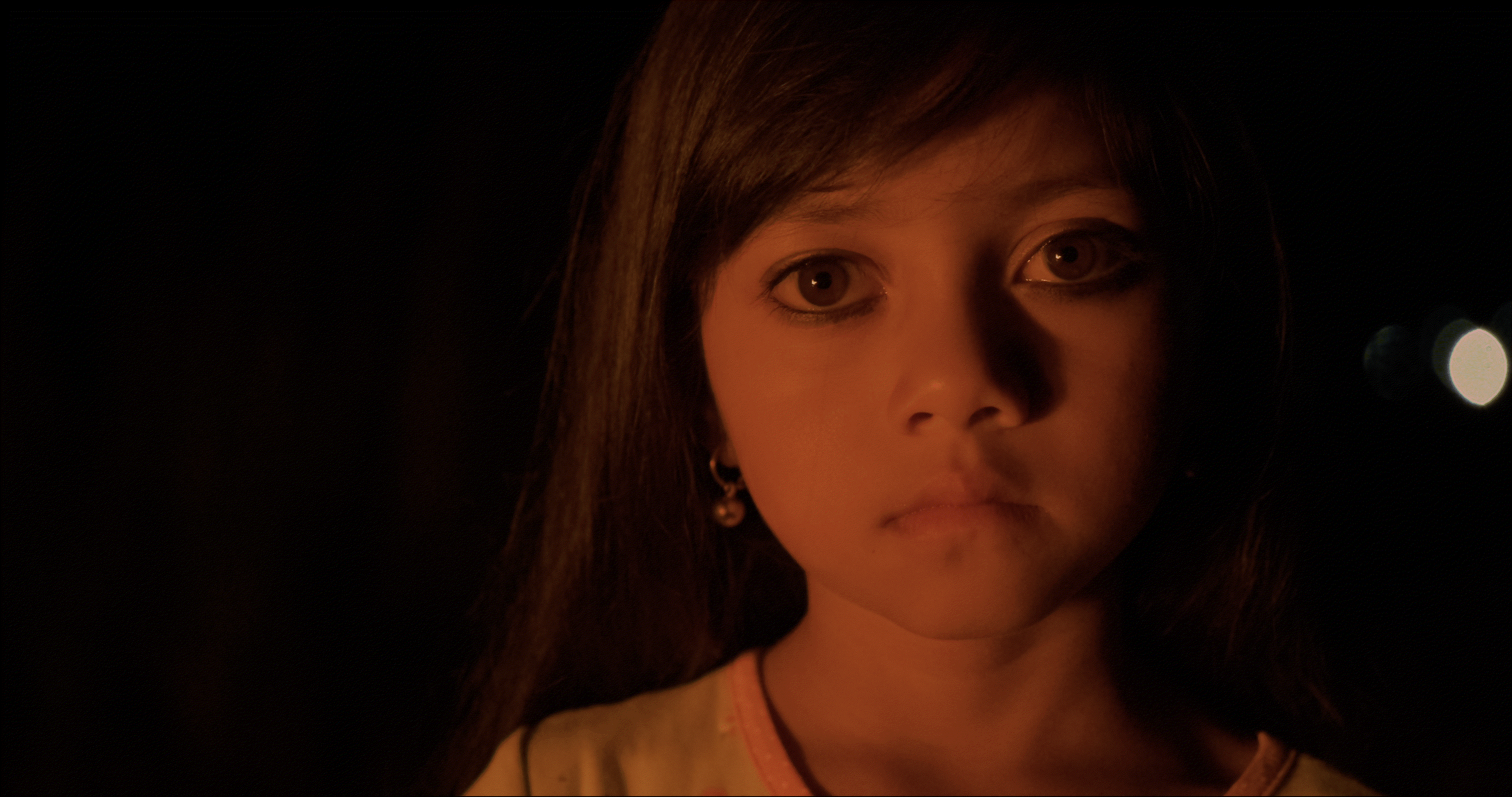
Based on a series of conversations, research, and meandering, Jain’s artistic text creates a series of portals into hallucinatory states of being-in-between. To fall into a trance, to be possessed, to untether one from oneself, to lose the ability to speak, a temporary escape from being human. To become, in a way, watery. In —scape, PURI welcomes visitors into a soft space which functions as a node of rest and community, to hold the muchness of this work and exhibition but also a respite from them.
— observe the beings emerging from voids —
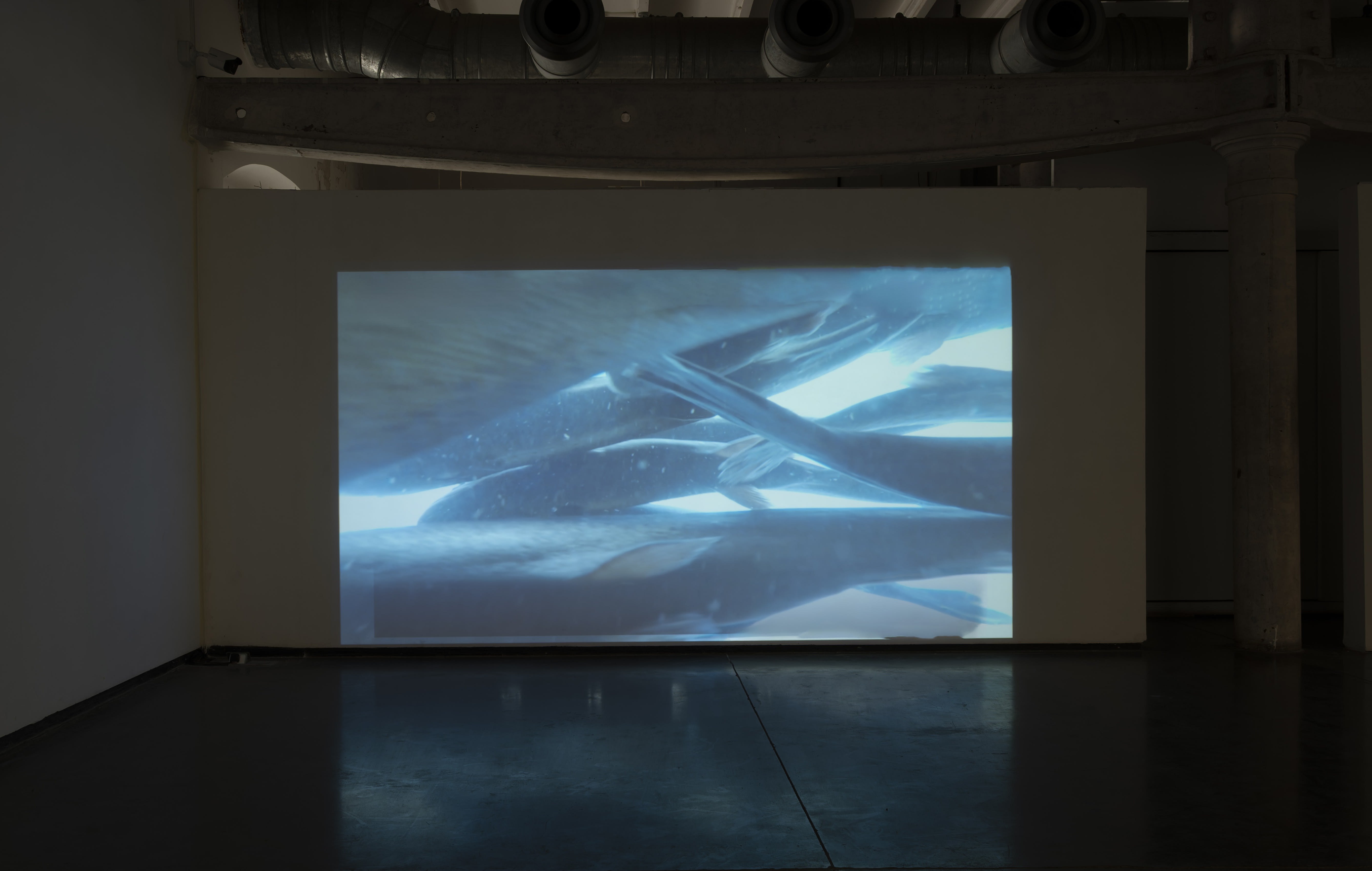
Malik Irtiza’s Thokei follows a figure from her childhood stories and recurring one in her artistic work; Shokpaseen is a shadowy non-being, void-like figure. It was once a songbird, but now roams strange places, as a trace of life which refuses to enter the void. Shokpaseen is specifically drawn to slippages between time and space. Thokei (spit) flows across waterscapes and (non-) language, absence and profusion, madness and humour. The sounds in this short film crash onto one another: fishy turmoil, Kashmiri lullabies, clapping hands. Thokei creates strands of non-deterministic but unequivocal solidarity across occupied territories and the pain of bearing witness to those who live and imagine within them, even as it dwells within the oneiric and fantastical. Malik’s work resists easy legibility, finding kinship and alliance in more-than-human, plural, and obfuscated vocabularies.
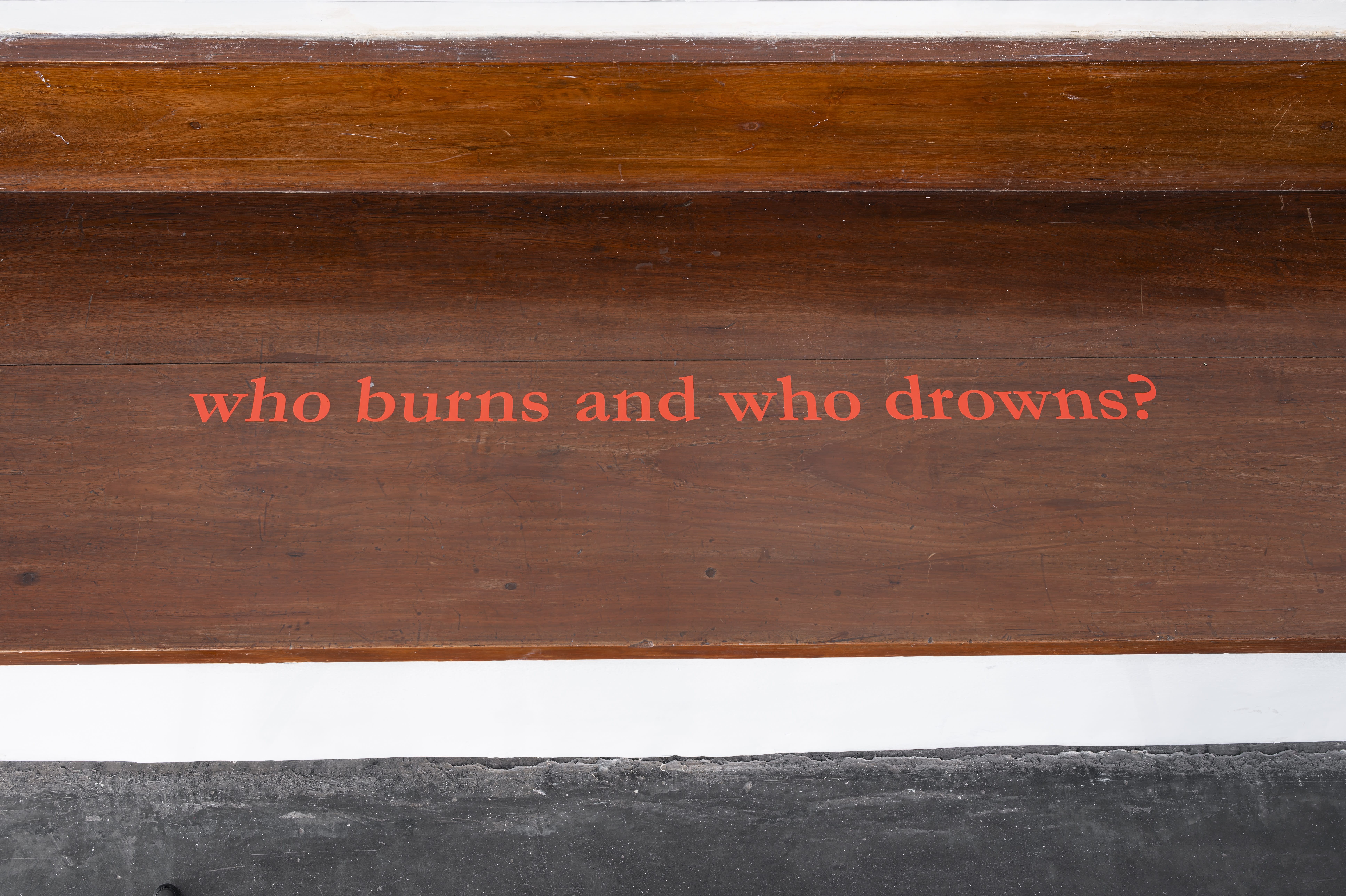
—scape, Installation View, 2025
— who burns and who drowns? —
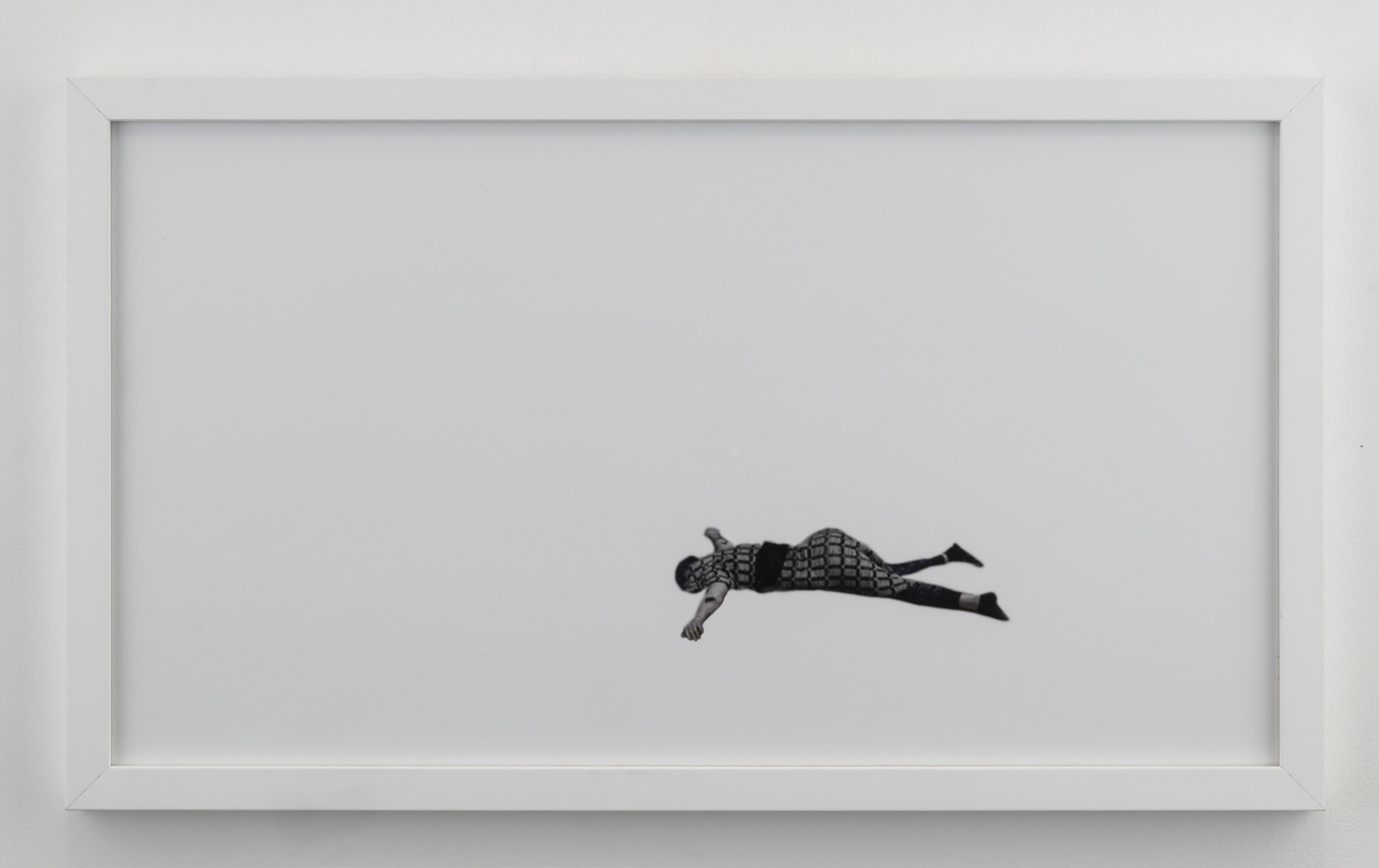
Unbecoming is a series of prints by Tejal Shah from which these four were specifically selected for —scape by the artist. In 2017, they began looking through hundreds of (often hyper-pixelated) images of dead bodies across the internet and newspapers, from lynchings to self-immolations and drownings. These four prints hold the bodies of three anonymous migrants found marooned on shores and part of a sinking inflatable raft.
Shah tenderly and carefully isolates these bodies from their surroundings in mass media images, suspending them in an eerie and purgatorial non-space. Through this process, she performs a ritual of private mourning. The act of extracting them from their legible conditions of ‘un- becoming’ (death-scapes) forges new states of un-becoming in these works. What compels the desire to look at or look away from such unfathomable violence, especially in a warm and safe gallery space? Is there any language that can hold such immensity? What are the ethics of circumscribing the narratives of these unnamed people? For nearly a decade now, Shah has been focusing on Tibetan Buddhism in conjunction with their longer exploration of eco-poetics, non-duality, and queer-feminisms. Unbecoming thus also embraces spiritual un-becomings in tandem with necropolitical ones.
— bodies at un-rest —
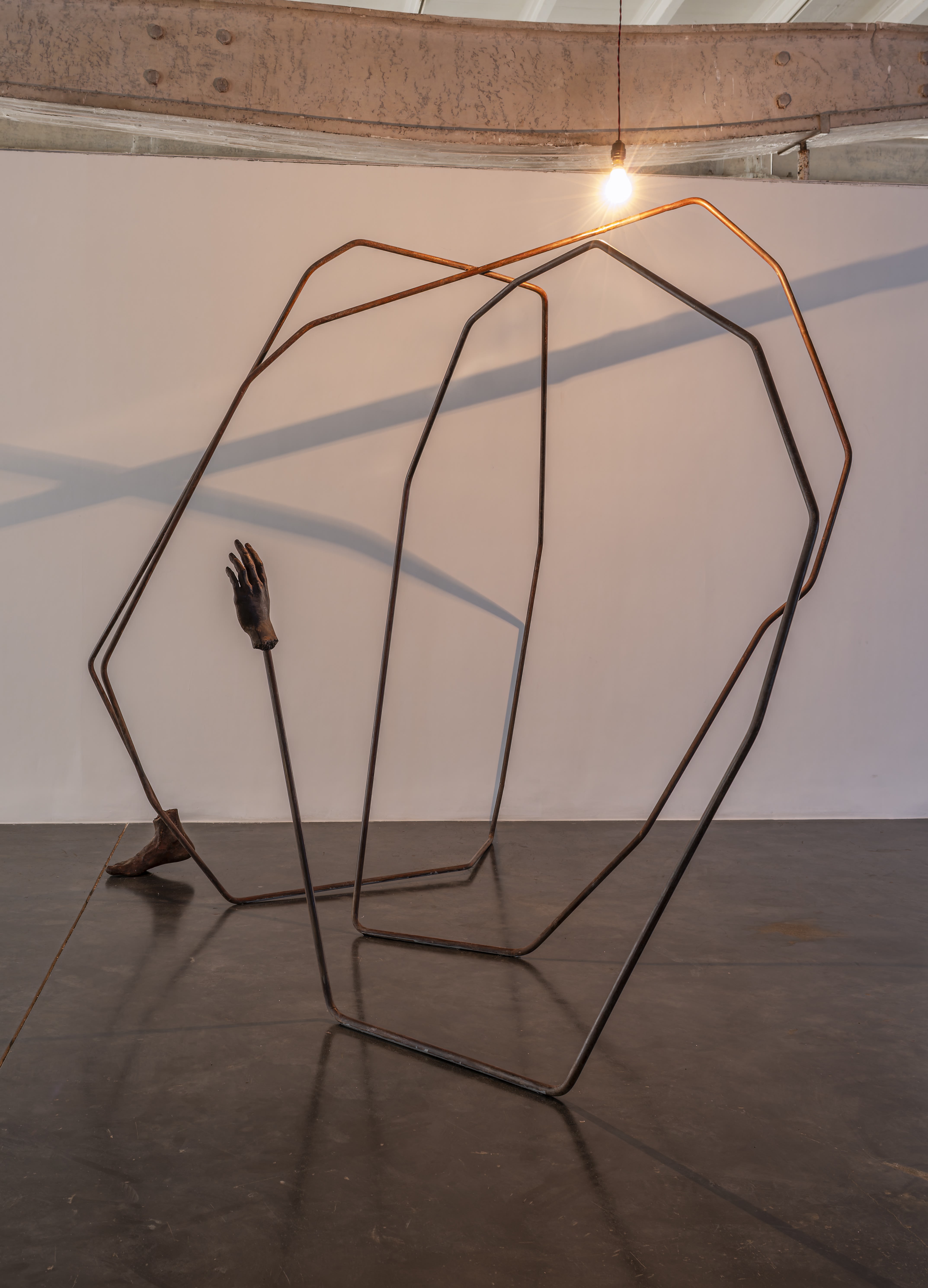
Amol K Patil traces three different trajectories of mass rural-to-urban migration across the Konkani coast, Delhi (specifically Connaught Place), and the changing landscape of Mumbai mainly through the extractive history of the BDD (Bombay Development Department, a once workers housing society and home to many Dalit creatives). This work, which Patil calls his ‘kilometre sculpture’ mirrors not only the paths of these movements and strategies of migration, but also the bodily outline of a worker.
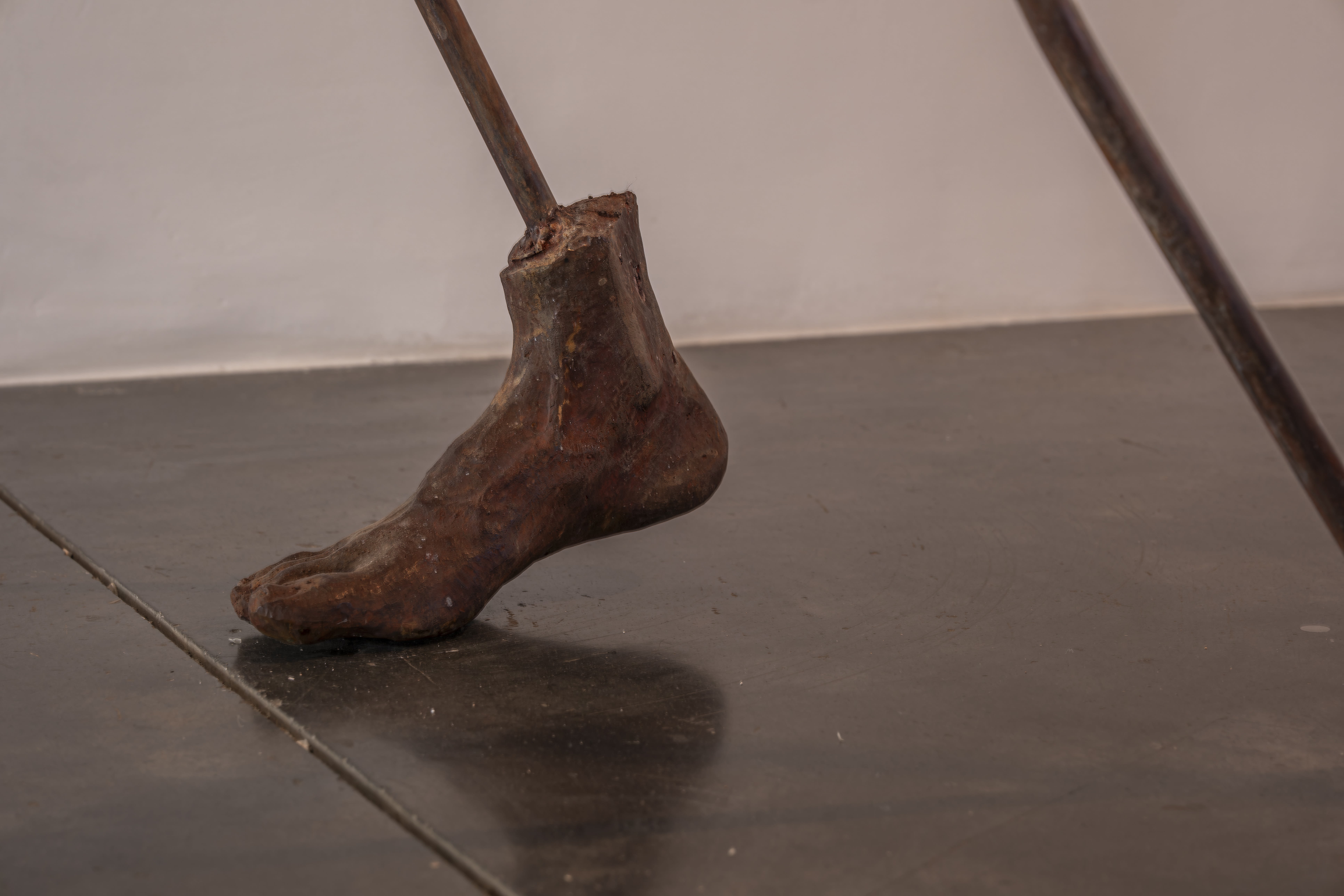
A foot signifying the march of a labour protest, a hand raised in defiance against a mythic non-future in the big city. The sculpture pulsates with a strange, cold luminosity in the middle of this space. A slow respiration, perhaps of sleep, meditation, or rest— states of being the migrant working class often cannot afford in urban India, (especially in its late-capitalist hell-scapes) even as they build its urban horizons. And yet, there exists wonder and warmth, conversations, poetry, and stories. Intimate languages shape and articulate these journeys from villages to Mumbai, wrought into Patil’s work.
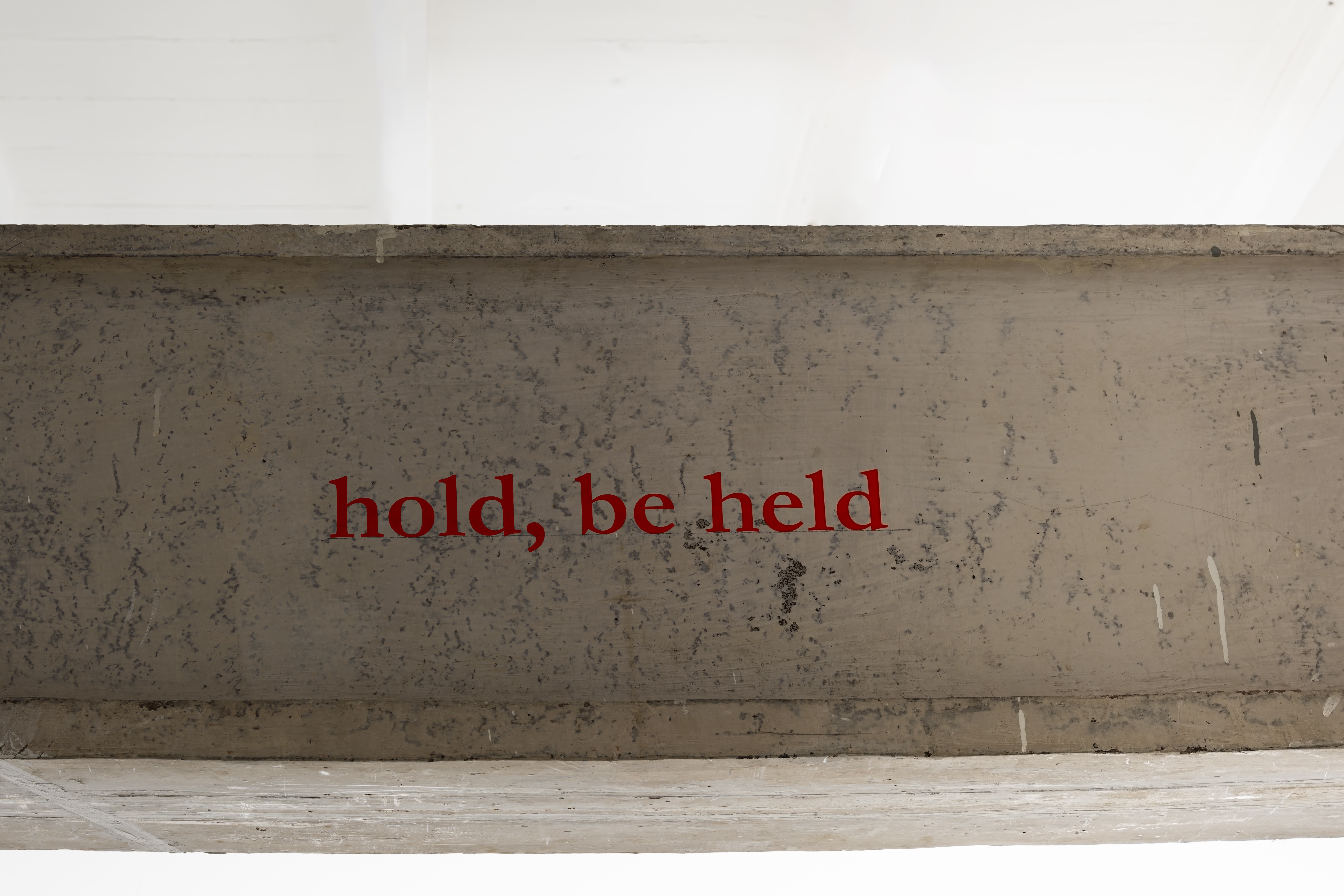
—scape, Installation View, 2025


